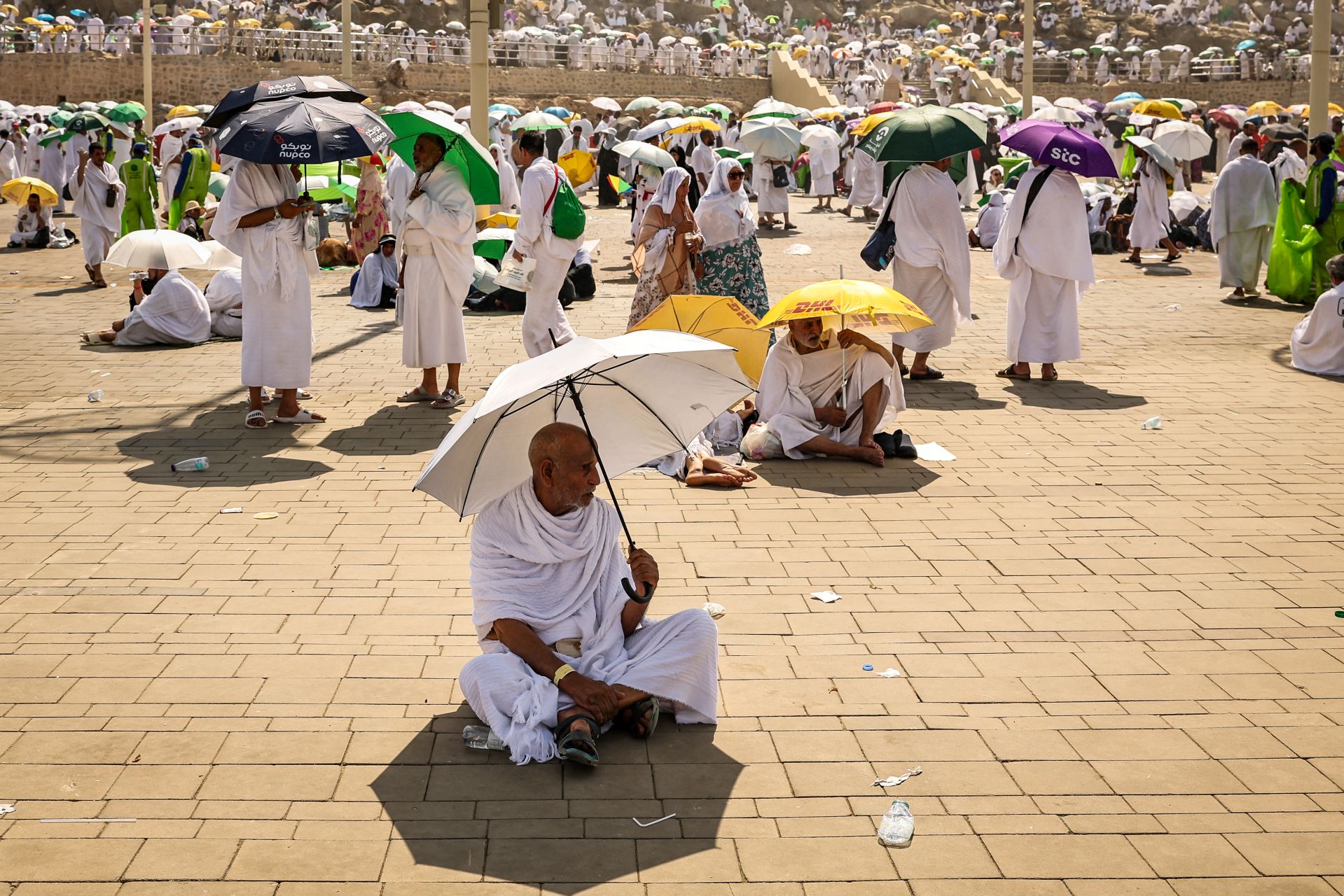- Home
- Middle East
- Saudi Prepares for Another Hajj Pilgrimage Under Extreme Heat

Muslim pilgrims use umbrellas to shade themselves from the sun as they arrive at the base of Mount Arafat, also known as Jabal al-Rahma or Mount of Mercy, during the annual hajj pilgrimage on June 15, 2024. © Fadel SENNA / AFP
The deaths of 1,300 pilgrims during the hajj, or pilgrimage to Mecca, in Saudi Arabia last year underscored the urgent need to mitigate dangers posed by extreme heat, with crowd management an essential first step, analysts say.
Temperatures soared to 51.8 degrees Celsius (125 degrees Fahrenheit) in the holy city of Mecca last June as 1.8 million worshippers took part in the annual rites, one of the five pillars of Islam.
Saudi officials said 83 percent of the 1,301 recorded fatalities did not have official hajj permits and were therefore unable to access amenities meant to make the hajj more bearable, including air-conditioned tents.
It was a high-profile example of the havoc wrought by heat in 2024, which the Copernicus Climate Change Service said on Friday was the hottest year ever recorded.
The vast majority of hajj pilgrims come from abroad, and diplomats involved in their countries' responses to last year's crisis told AFP at the time that most deaths were heat-related.
While Riyadh has not detailed preparations for this year's pilgrimage -- still five months away -- authorities will no doubt want to avoid a repeat, said Abderrezak Bouchama of Saudi Arabia's King Abdullah International Medical Research Center.
"I think they will above all reduce the risk of illegal pilgrims," said Bouchama, who has worked with the Saudi government for more than three decades on reducing heat deaths.
"I think they've learnt their lesson, so we have to see what kind of measures they have taken for that."
Other steps to make heat less perilous, such as introducing wearable sensors to quickly detect heat stress, are long-term projects that likely won't be rolled out by June, Bouchama added.
The hajj takes place over five to six days, mostly outdoors.
It has seen a number of disasters over the years, including in 2015 when a stampede during the "stoning the devil" ritual in Mina killed up to 2,300 people.
Responses in the past have "typically focused on infrastructure improvements and crowd control measures", said Karim Elgendy, an associate fellow at the Chatham House think tank.
"Based on this pattern, we would expect authorities to approach the 2025 hajj with enhanced heat mitigation infrastructure and potentially stricter capacity controls."
Hajj permits are allocated to countries on a quota system and distributed to individuals by lottery.
But even for those who can obtain them, the steep costs spur many to attempt the hajj without a permit, though they risk arrest and deportation if caught.
The introduction of a general tourism visa in 2019 has made it easier for all foreigners, including permit-less pilgrims, to enter the country.
By Sofiane ALSAAR and Robbie COREY-BOULET, AFP
Read more




Comments